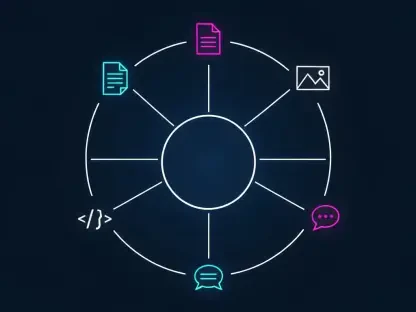The infiltration of PupkinStealer marks a pivotal shift in cybercrime tactics known to surface in April 2025, targeting Windows users and heralding a more sophisticated level of malevolence that challenges prevailing security paradigms. Crafted with precision to steal stored credentials and authentication tokens, this malware employs a rapid “smash-and-grab” approach. It aims to execute its data theft operations swiftly, often within seconds, while consciously avoiding any long-term presence in compromised systems, thereby reducing chances of detection. At its core, PupkinStealer capitalizes on vulnerabilities within Chromium-based browsers such as Google Chrome, Microsoft Edge, Opera, Brave, and Vivaldi. The sensitive information collected is compressed into a ZIP archive, subtly bypassing conventional detection systems through the use of Telegram’s Bot API. This method ensures instantaneous data transfer to malicious actors under the guise of legitimate infrastructure, effectively camouflaging such activities from routine security scans.
Advanced Exfiltration Techniques
The ability of PupkinStealer to leverage Telegram’s Bot API for data exfiltration is a significant departure from traditional command-and-control server methodologies. By embedding a Telegram bot token and chat ID within the malware, attackers can secure HTTPS communication channels to post stolen data to Telegram’s API endpoints seamlessly. Unfolding multiple benefits, this technique enables attackers to maintain anonymity and encrypt their activities, accessing stolen data in real-time while operating under the cover of a widely trusted service. Unlike conventional theft frameworks, which might attract unwarranted attention through prolonged network activity, PupkinStealer’s approach radically diminishes such risks, elevating its threat level considerably. This development underscores a broader trend in innovative cybercriminal practices that adapt quickly, exploiting well-established platforms to evade traditional defenses and cause significant harm unnoticed.
Broader Data Harvesting Mechanisms
PupkinStealer adopts a comprehensive and aggressive approach toward data harvesting, targeting an array of valuable information beyond merely passwords. Notably, its detection mechanism recognizes the presence of the Telegram Desktop application on infected systems and promptly takes over by terminating the app and copying the entire “tdata” folder. This maneuver enables session hijacking, efficiently bypassing authentication protocols and skipping triggers for security alerts or multi-factor authentication challenges. Consequently, cybercriminals gain unauthorized access to user sessions without undergoing detection. This tactic notably expands the malware’s capabilities, allowing cyber adversaries to not only capture login credentials but also acquire personal communications and other sensitive data stored within these applications. The sweeping scope of PupkinStealer’s operations speaks to its formidable threat level, positioning it as a critical concern for cybersecurity experts worldwide.
Detection Indicators and Security Measures
Recognizing PupkinStealer’s digital footprint becomes crucial, as its presence can be determined through specific indicators such as file hash profiles, creation of distinctive directories within the %TEMP% folder, and network connections to Telegram’s API featuring identifiable bot tokens and chat IDs. These footprints, although subtle, are detectable with vigilant monitoring and strong endpoint protection solutions equipped with advanced behavioral detection capabilities. Organizations are advised to actively monitor unusual process terminations, particularly those affecting web browsers and messaging applications, indicative of PupkinStealer’s operations. Implementing robust endpoint protection strategies tailored to quickly identify and mitigate abnormalities is recommended, significantly lowering exposure to potential breaches. Proactive measures and continuous surveillance are vital in defending against this evolving threat, ensuring that cybersecurity infrastructures remain resilient amidst transforming threat landscapes.
Implications and Future Considerations
The emergence of PupkinStealer marks a significant shift in cybercrime strategies, appearing in April 2025 to threaten Windows users and introduce a new layer of sophistication to cyberattacks. This malicious software is expertly crafted to target stored credentials and authentication tokens, employing a quick and effective “smash-and-grab” technique. Its goal is to carry out data theft rapidly, often in mere seconds, while intentionally avoiding long-term presence, which minimizes detection risk. PupkinStealer exploits security loopholes in Chromium-based browsers like Google Chrome, Microsoft Edge, Opera, Brave, and Vivaldi. The stolen sensitive data is compressed into a ZIP archive, effectively evading standard detection systems using Telegram’s Bot API for data transfer. This approach facilitates instantaneous delivery of data to cybercriminals, masquerading as legitimate activity, thereby bypassing routine security checks and making it challenging for conventional protective measures to identify the breach accurately.









